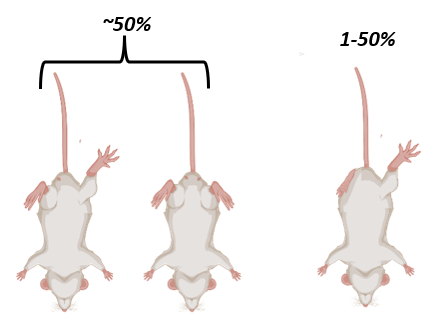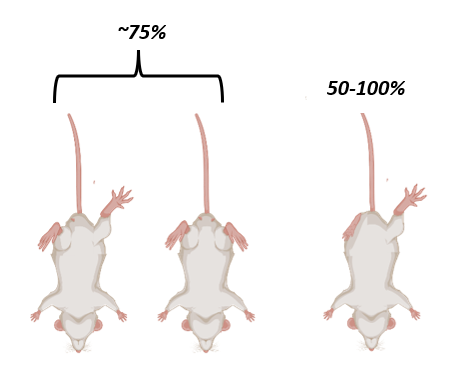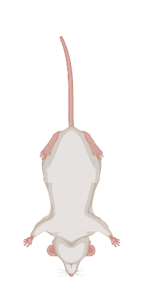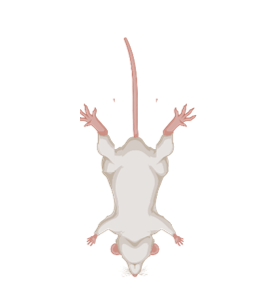Hindlimb Scoring
Ian N Krout, Tim Sampson
Abstract
This assay details our methodology for examining the hindlimb clasping of mice as a measure for PD like pathology and neurobehavior. Hindlimb clasping has been used in many studies as a measure of PD like progression as the extent of clasping correlates with dopamine loss in the mouse model1. For toxicological
assessments of aging this protocol should be completed prior to any treatment and again post all treatments. This allows for a baseline reading of hindlimb
splaying for each group. The below method is an adapted protocol from Lieu 2013.
Steps
Acclimation
Bring the mice up from the vivarium to the behavior room at least 1h prior to assessment to allow for acclimation to the environment prior to assessment. Assessment will take place in the home cage, so there is no need for other material.
Set-up
Assessment will take place in the home cage, so very little set up is needed.
Find 2 independent scorers who are educated on the scoring system as detailed below. These individuals will need to be available for two days in a row at the same time each day. Hindlimb scoring is done on two separate days, with the average scores recorded.
Prior to beginning, determine the order in which the mice will be scored, record this order in your lab notebook.
Assessment
Start with the first cage and begin by lifting one mouse at a time by the tail, positioning the
mouse so that those scoring are viewing the stomach – mice should be held ~1.5” from the base of the tail and ~2’ over the wire top of their home cage (away from the food basin). n).
Suspend the mice from ~5 seconds while those scoring observe and make their assessment.
Move on the next mouse in the cage until all mice have been scored in a cage, move onto next cage.
Repeat until all mice have been scored.
This assessment should be completed on 2 consecutive days, at the same time of day, scored by the same individuals. The order of mice should be randomized each day, and scoring should be done by taking the average of both trials.
Scoring
Scoring is done for each mouse on a scale from 0 – 3. A whole number from 0 – 3 should be assigned for each mice based on the following qualifications below (i.e. 0,1,2,3)
A 1 is observed when the mouse is suspended by the tail and one or both limbs show partial inward clasping towards the midline for ~50% of the observation time, or the limb of one side shows full clasping towards the midline for <50% of the observation time. A 1 should also be scored if trembling of the limbs is observed during the tail suspension (Figure 2).

A 2 is observed when the mouse is suspended by the tail and both limbs show partial clasping towards the midline for >75% of the observation time, or one side shows full clasping towards the midline for the duration of the observation time. In both cases, some flexibility of the hindlimbs is observed, but most of the time clasping of hindlimbs (one or both) is seen (Figure 3).

A 3 is considered as severe pathology and is observed when the mouse is suspended by the tail and both limbs immediately clasp and remain clasped for the duration of observation. In this case, there is no flexibility observed for the hindlimbs (Figure 4).



